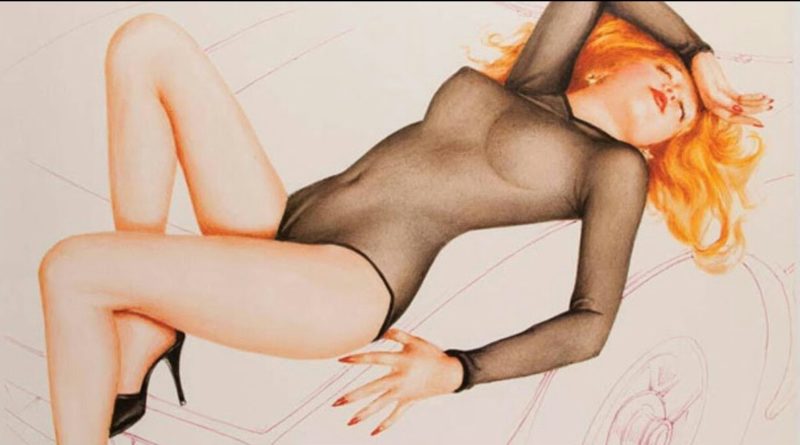New Wave’s Ne Plus Ultra: The Cars’ Candy-O Turns 40
With their second LP, the Boston band downshifted into mainstream success

On their era-defining second album Candy-O, currently celebrating its 40th anniversary, The Cars neatly managed to tweak their AOR/New Wave amalgam into a more idiosyncratic shape while upping their already considerable mainstream profile even further. In the process, they created a record that the hip kids and the hoi polloi alike could love, both then and now.
In the main, the band’s self-titled 1978 debut and Candy-O have always seemed to be of a piece, consecutive chapters of the same story in the way that, say, The Godfather and its sequel are. But even while making a seamless transition from the first to the next, The Cars still amped up the quirkiness that had been a big part of their appeal from the beginning, making their second LP a weirder, darker experience, if no less of an earworm hotel.
A big part of the credit goes to Roy Thomas Baker, who produced both albums. Leading up to Candy-O , his resume included a long string of Queen albums and a couple by Journey, so his status as an AOR pasha was unassailable. Baker’s best known for helming huge-sounding albums teeming with vocal harmonies and guitar riffs multi-tracked to infinity (not that there’s anything wrong with that). But before he ever came around to The Cars, the British producer also oversaw albums by the comparatively left-field likes of Hawkwind, Be Bop Deluxe, Lewis Furey, and Man, so in addition to amplifying the bejeezus out of his artists’ most accessible attributes, he also knew how to let them be themselves — a combination of skills few producers possess.

Baker helped The Cars rack up the industrial-sized Queen-like backing vocals on first-album hits like “My Best Friend’s Girl” and “Good Times Roll,” but when the band wanted to scale things down a touch for their second go-round, he was able to oblige. And he didn’t get in bandleader Ric Ocasek’s way when the singer/guitarist wanted to head down a particularly arcane path, as on “Shoo Be Doo,” probably the most unconventional track The Cars ever cut.
Ocasek was famous for having underground tastes and a curatorial instinct. He frequently championed lesser-known artists, producing records for Romeo Void, Bad Brains, The Fast and others. But he was particularly noted for being a staunch supporter of electro-punk pioneers Suicide. Not only did he produce their classic 1979 single “Dream Baby Dream” and bring them onto the episode of The Midnight Special which The Cars hosted, he carried the uncompromising duo’s influence over to The Cars’ music, never more overtly than on “Shoo Be Doo.” Clocking in at little more than a minute and a half, the track takes Suicide’s relentless electronic-based minimalism and bounces it around a nightmarish hall of mirrors, forsaking conventional song structure in favor of swirling, synthesizer-soaked paranoia.
VIDEO: “Shoo Be Doo”
Displaying the duality that makes Candy-O great, the labyrinthine hellscape of “Shoo Be Doo” segues uninterrupted into the title track, in which those tension-packed electronic underpinnings are expanded into an elegantly surging arrangement that combines keyboardist Greg Hawkes’ sequencer tapestries and guitarist Elliott Easton’s police-siren riffs with Ben Orr’s deep, lustful vocals for an ode to a darkly inscrutable mystery woman. The roiling New Wave workout is willfully off-kilter enough to be authentically odd but it still maintained enough of a speckless sheen to achieve radio ubiquity.
And though the ’50s/’60s pop influences of tunes like “My Best Friend’s Girl” are dialed down here, that doesn’t stop “Let’s Go” and “It’s All I Can Do” from feeling — in the most positive sense — like full-blooded successors to debut LP highlights like “Just What I Needed” and “Bye Bye Love.” All four are at the topmost tier of The Cars’ canon, and it’s no coincidence that they’re all sung by co-lead vocalist Orr. Sure, Ocasek’s wiry yelp was an effective delivery mechanism for his elliptical lyrics, and he inadvertently helped create a kind of template for New Wave vocal stylings. But Orr’s deeper, richer tones were the perfect fit for The Cars’ combination of future shock and classic rock, somehow conveying passion and detachment simultaneously.
VIDEO: “Let’s Go”
Candy-O and its lead single, “Let’s Go,” brought The Cars even bigger chart success than last time around. The fact that this achievement was unlocked even as the band continued artistically progressing speaks to the power of their vision during that period. While this point on The Cars’ timeline was still not their commercial peak, it was unquestionably their musical apex. And every time the greatest albums of the New Wave era are tallied, there’s always a seat at the table for Candy-O .
VIDEO: The Cars Go To College, 1979




